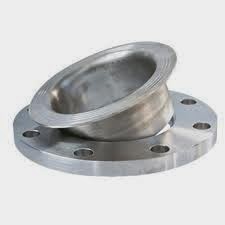 |
| Install a Slip-on Flange |
Slip-on Flange, SO Flange, Slip-On Pipe Flanges
Flanges are most often used to connect pipes that have diameters of more than 2 inches. The flange's joint consists of two matching disks of metal, separated by a gasket, that are bolted together to achieve a secure seal with the gasket material. The flange is attached to the pipe by screwed fittings. The flange uses force provided by the bolts to pre-load the gasket. When internal pressure is applied, there is enough contact stress between the flanges and gasket to maintain a seal.
Check the flange and pipe to make sure there is no damage that may prevent a proper seal from being formed.
Slide the slip-on flange onto the pipe using your hand. Determine where you will be welding the flange to the pipe. In most cases, you will be welding the flange to the end of the pipe.
Use a welder to weld the inside and outside of the flange to the pipe. This will create a strong seal between the pipe and flange.
Perform a pressure test to ensure the welded seal does not leak. Turn on the water leading to the pipe and observe the pipe for any leaks.
How to Use Slip-On Flanges on a Steam Pipe
A pipe flange is a type of pipe fitting, commonly used in plumbing applications such as installing a toilet or sink. Pipe flanges connect steel pipes to a valve choke or other equipment piece. Fitting the pipe flange to a steel pipe is a relatively simple process to do, with the right equipment.Select the flange size that is appropriate to the steel pipe. The fit needs to be snug and not loose. The slip-on flange consists of a bored hole with a diameter just slightly larger than the steel pipe.
- Slip the flange over the end of the pipe base.
- Thread the flange pins to tighten the flange's grasp on the pipe. The pins will keep the pipe securely in place inside the flange. There are usually six to eight pins in place. Use a screwdriver to tighten the pins all the way.
- Try to pull the pipe out of the flange to make sure that the pins are efficiently tightened. If they aren't, re-tighten them with the screwdriver. Inspect the pins to make sure they are down all the way and that the pipe cannot move inside the flange.
- Use a hammer to slightly tap the flange in place. The flange face should be flush with the end of the steel pipe.
- Use a 12-inch wrench with 85 pounds force to tighten the pins. Apply 80 to 85 foot-per-pounds torque on the pins, or until the pin heads break off.
- Lubricate the gasket of the pipe and stretch it over the pipe end, with the beveled edge positioned in the field flange.



